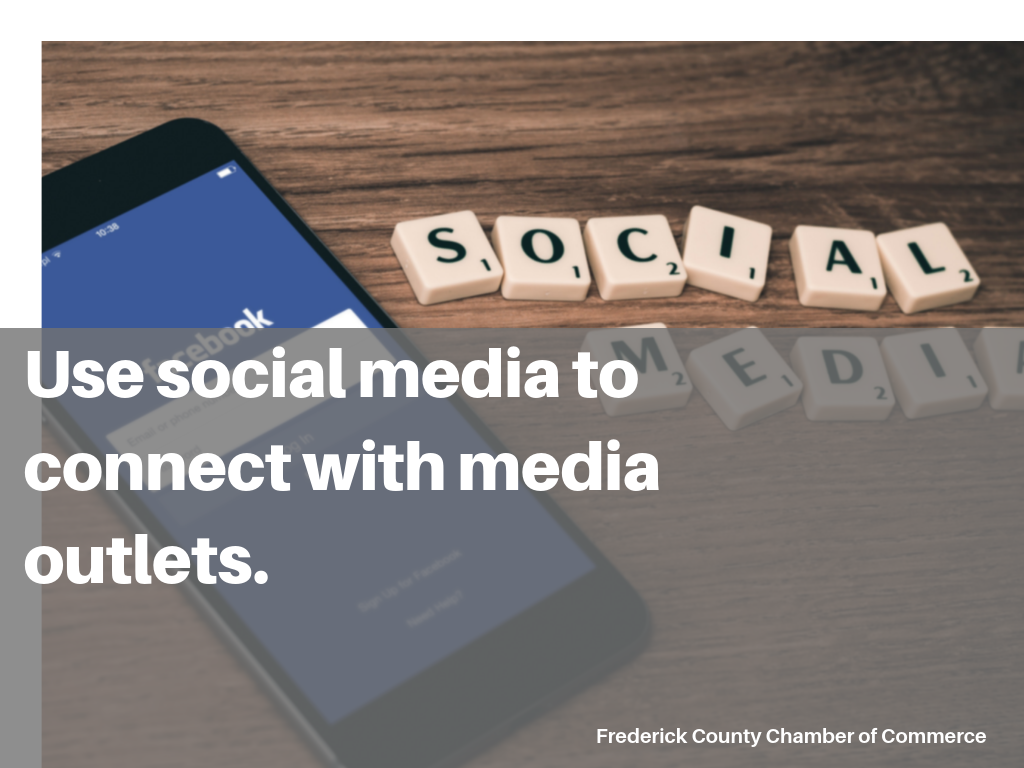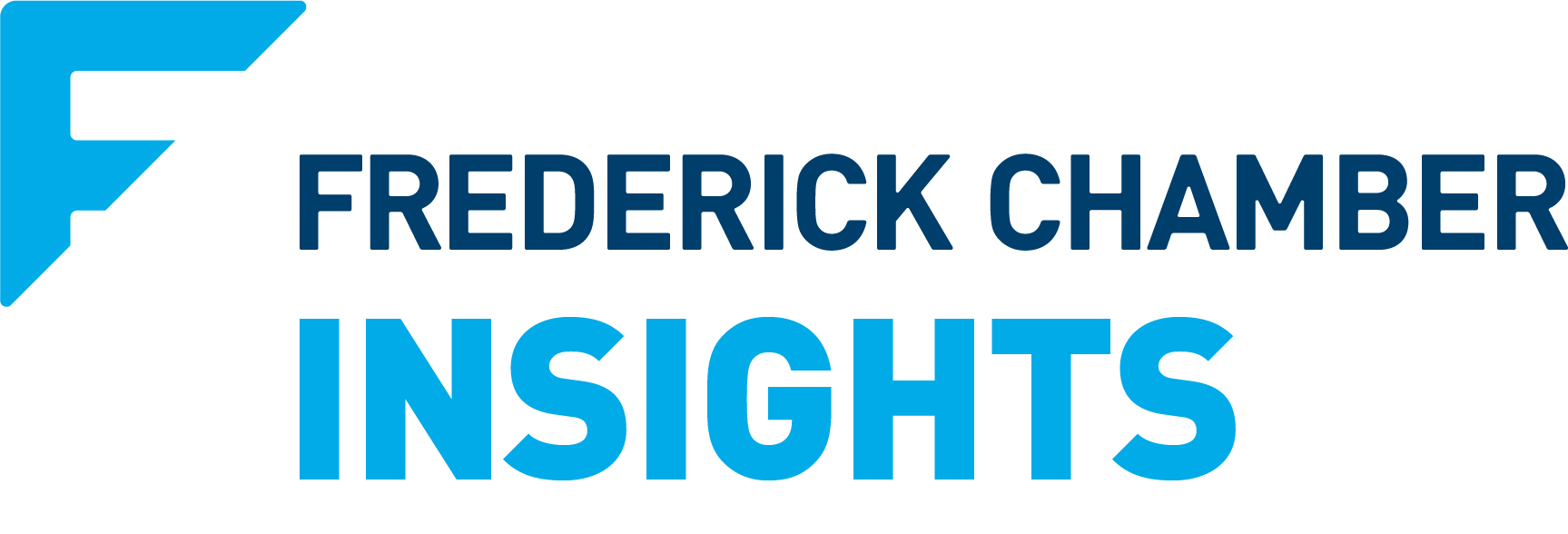Whether you’re launching a new business or product, working to boost brand awareness, eager to promote an event, or hoping to go viral, there are countless opportunities to do so through the use of traditional media like print news, magazines, radio and television. The key is knowing whom to contact and what to say when you do, and that’s what our panelists were there to impart.
The panel, made up of seasoned industry professionals with years of experience weeding through pitches and scheduling impactful news stories, included Georgie Wilson, Publisher, Frederick News-Post, Guy Fletcher, Editor, Frederick Magazine, Kim Dow, Editor, Sass Magazine, Dianah Gibson, News Director WFRE, and Andrew Wyatt, GM & VP, WDVM News.
Whitney Hahn, owner of Digital Bard, served as MC and moderator, asking submitted questions of the panelist as well as fielding a few audience questions towards the end. Attendees were provided with the opportunity to interact with the panelist following the conclusion of the event.
For those unable to attend, here are a few key takeaways to serve as guidance as you begin to engage the news media to gain more coverage for your business.
Write good press releases and send them to the right people.
Press releases, when well written and engaging, are still an effective way to connect with the media. While the media has no obligation to provide coverage to press releases, many media professionals do look at them and evaluate them to determine if the information is a good fit for their audiences.
As Guy Fletcher of Frederick Magazine explained, “We are looking at every press release on its own and subjecting it to whether or not it works for our readership and our publication. Every outlet has a different type of readership. It may work for one, it may not work for others. In some cases, it may work for us at this time and not another.”
There are several other methods used for getting your story into the right hands, but there is value in this method of communication
Takeaway: Send press releases to multiple media professionals and don’t get discouraged when they aren’t immediately picked up. Your story may not be a fit at this time, but it could in the future.

Make it easy by writing the right type of pitches and releases.
Andrew Wyatt of WDVM News summed it up best, “Put the important stuff at the top because no one gets to the bottom.”
Media professionals are bombarded daily with pitches and press releases from businesses and companies who want their attention. There’s no way to spend time on all of it, and if you want them to give you any attention, you have to grab them immediately.
They need to understand the who, what, when, where, and why of your pitch from the start or there’s little hope they’re going to delve deeper. Lead with an engaging subject line, follow with an interesting title and a quick rundown of the facts and why they matter to those in the community.
In writing they call it the inverted pyramid. Digital Bard owner Whitney Hahn explained it perfectly, “You think of an upside-down pyramid–your most important information the who, what, where, when comes first, and then decreasing levels of detail come later.” Everything you want to say is right there at the top of your pitch, easy to find and evaluate without investing a ton of time, just the way media professionals like it.
Wyatt agrees that the best thing you can do for an outlet is to make it easy, “If it lands in our lap and it’s a story ready to go, and it’s appropriate and makes sense for my audience and the area that we serve, then you just made our jobs easier for us.” With that said, he admits that it’s just not possible to look at them all.
Takeaway: Keep it very short. Keep it very brief. And don’t make the reader, in this case the media, work too hard for it. Make it easy for the media by providing them with well written, complete stories when possible as you’re more likely to get covered when you’re able to save them some time.
Educate yourself about the audience the publication reaches and the people that work there too.
Just like it’s important for the outlet to know their audience when it comes to creating content and finding stories to cover, it’s important that you, as a business owner, make an effort to get to know the outlet you are pitching.
Learn about what they cover, the sections they have, and what types of stories they feature to ensure that you can provide something that they will feel compelled to share with their audience. Kim Dow, editor at Sass Magazine, agrees that this is step one for determining who and what to pitch, “You really have to do your research and kind of know what that media outlet is looking for in terms of what types of stories they run.”
At Sass Magazine, they are always looking for things to share with their audience that benefits them in some way. Figure out how you can give the outlet you’re pitching exactly what they’re looking for and they’re more likely to work with you.
Personal relationships are important too. In today’s on-the-go, tech-enhanced business world, it’s often easier to just search on Twitter for the reports of a certain publication, hunt down their emails, and send them all a copy of your pitch, but that’s not always the most effective method of getting the coverage you want.
You’re more likely to get your emails opened and your stories covered, if you take opportunities to connect with members of the media so that you have someone to go to when you think you have a real story that is worthy of coverage.
Takeaway: Get to know the audience of the publication you want to work and the people in charge of reaching them. You want to be a trusted resource for the publication and their audience as well.

Use social media to connect with media outlets.
Most media outlets are active on social media and engage in social media listening within their own communities and beyond. Posting on social about certain topics and engaging with the outlets via their social channels can lead to coverage in a variety of ways.
Kim Dow explained that her publication actively seeks contributors via their social platforms. They will post calls for stories and experts on their pages when they are looking for people to weigh-in on certain topics. They expect and appreciate engagement for the sake of being featured across their channels.
Social media is also a great way for the media to discover subject matter experts for many topics. Commenting on a Facebook or Instagram post, or responding to a Tweet is a reasonable way to make yourself known to the media as someone who has expertise in a certain area, but following it up with an email is probably best. Like previously mentioned, it’s that personal relationship that could be the difference between you and another individual in your space.
Takeaway: Social media is a great way to engage with a media outlet and determine what types of stories they’re working on and what they may be interested in pursuing in the future. Take it a step further and send an email to the reporter to let them know that you have expertise in a certain area so that they may contact you in the future, should the opportunity arise. That deeper human connection and relationship building is what could ultimately lead to coverage.
Think about the bigger picture.
The news media is not designed to be a commercial for your business. Their goal, first and foremost, is to provide information to their audiences. Often, that information can pertain to you and your business or event which means that it can be a great marketing tool for you, particularly when it comes to increasing brand awareness. That said, business leaders need to approach the media with the mindset that they are able to offer something to the news media and their audience–a fun thing to do with kids, a learning opportunity, pain relief for chronic sufferers, friendship, information, an emotional moment, an opportunity to do good–in an engaging way.
Andrew Wyatt shared a bit about his experience with businesses, eager to get coverage for a new product or service, that come into the publication and give a presentation. He warns that this could leave the wrong impression if businesses don’t present it correctly, “Sometimes that’s just a commercial and that usually doesn’t work. If you come to the news department to do a commercial for your business that’s probably not going to do it. You have to dress it up as something that has some meat and some information to disseminate that is news.”
Dianah Gibson of WFRE agrees with the importance of making content relatable and relevant to their audiences, “What affects your family, your community, those are the stories that we are going to be following.”
Guy Fletcher summed it up nicely by explaining the importance of perspective and thinking about the bigger picture, “Your message will be much more effective if you put it into the perspective a real trend in the world, that something bigger is going on than just in my business… Yes, promote your business all day long, but also try to think of the bigger picture sometimes as well. We love that kind of stuff.”
Takeaway: Think about the bigger picture when you’re ready to pitch a story to the media. It shouldn’t just be about you and your business, but how your product or story impacts the viewer and the community as a whole.
Provide as many resources as possible.
Images, video, interviewees, anything that can build the story out and provide content for their social channels is helpful.
Whether you’re reaching out to a radio station or a print publication, they have social media departments that utilize all of that content across their platforms.
Takeaway: Provide as much content as possible when you reach out to make it easy for a media outlet to put something together.
Think about how you might use paid media more effectively.
There are several opportunities to work with the media in a more targeted, effective way by utilizing paid media options that most outlets offer.
You can reach out to the sales departments at each of the organizations and learn more about how they utilize advertorials, sponsored posts, and other options to help businesses get their stories told in a way that fits cohesively into their platform.
Takeaway: Earned media isn’t the only way to effectively use media outlets to gain exposure for your business.
Want to learn more about how your business can work more effectively with the media to get more coverage? You can listen to the audio from the event below.

